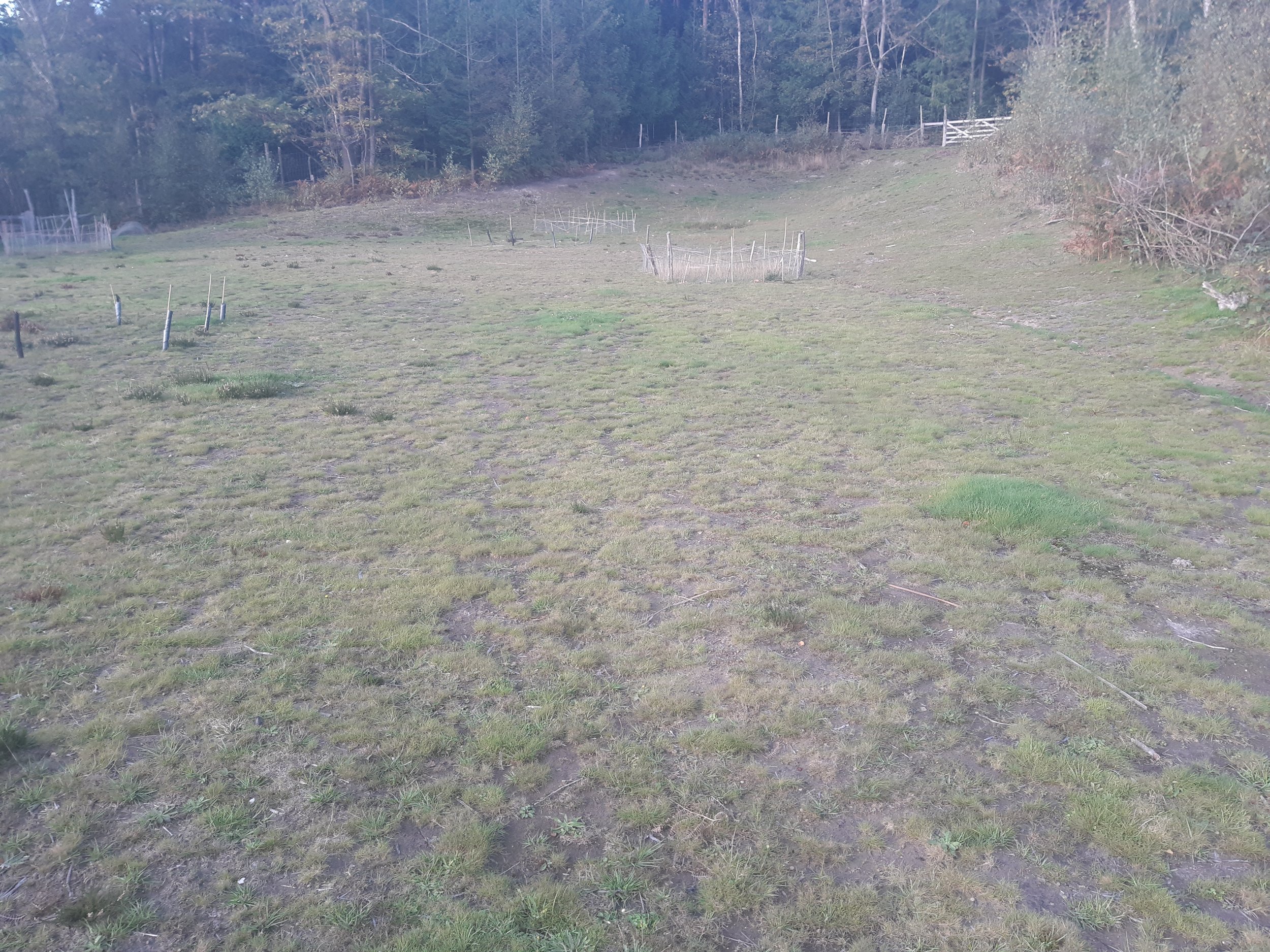A Walk with the Wilder Ouse
Pond and other wetland habitat creation are important projects to increase biodiversity
17th October 2023
Having returned from my break in Hamburg I am now refreshed and ready to tackle the next Wilderness Wood challenge.
Sam Buckland of Sussex Wildlife Trust worked closely with us on leaky dams building. As the manager of the Sussex Flow Initiative (SFI) he was one of very few people who have built more leaky dams than me. The SFI has now morphed into The Wilder Ouse project which does many of the activities addressed by SFI, but with a much broader remit tackling climate change and reversing the decline of important wildlife and natural resources. Wilderness Wood is at the extreme eastern end of the Ouse catchment. Our contribution towards the project is largely by way of demonstrating to other landowners how they too can improve the Ouse, its catchment and its wildlife.
Today I am to conduct Lydia Baxter (Wilder Ouse Project Officer) around Wilderness Wood, along with Kate - of home team fame. Inevitably I need to show her one of the 106 leaky dams so far built in the wood, although it is unlikely that anyone could walk the wood and not see them!
This leaky dam was built last Thursday by Icelandic teachers - they chose to retain the leaves.
Lydia and Kate exchange information about species recording (bumble bees for Kate, beavers and pine martens for Lydia). Both have their place at Wilderness Wood, although I suspect the latter might be a few years off just yet!
Lydia is impressed with the leaky dams, but also enthusiastic about the health of the wood in general. I point out to her that unlike most softwood plantations of the past 100 years, our softwoods are managed for age diversity. This gives astructure similar to natural woodland. Newly planted trees are initially widely spaced or are later selectively thinned. This leaves space for the planting of new trees in-between. When eventually felled, it will not be all at once by big heavy machines, but individually by hand (well chainsaw actually), before being removed by horses. This not only reduces the compaction of the delicate woodland soil, but once new trees are planted, gives a more natural variety of tree size and age across the wood. Great for wildlife biodiversity.
She also points out that should Wilder Ouse be successful in introducing pine martens to Sussex woodland they will be a welcome natural control measure for grey squirrel, which do so much damage to trees, as well as suppressing native red squirrel populations.
Young Pine Marten © Mark Hamblin/2020VISION
Kate points out the ride widening that is a currently taking place in a few areas of the wood. These areas serve as woodland glades, with a third of each glade being coppiced each year, on a 3 year rotation. This gives more ecological variation to benefit a wider variety of wildlife on the wood and provides a supply of whippy poles we can use around the wood.
Arriving at the new ponds dug last year, I am delighted to see that the recent rains have left some water behind, but the ponds won't reach full until the seasonal Wilderness Stream starts running again. Nonetheless diving beetles have already moved in. Lydia is quick to point out the value of even a seasonal pond for wildlife. She points out that the adjacent trees however are a mixed blessing - their shade reducing evaporation of the pond in summer, but their leaves adding unwanted nutrients and eutrophication of the pond water in autumn.
The upper of the three new ponds hosts diving beetles, just days after filling from recent rains
The tour takes us by way of Streamside campsite before we make our way up the main ride. Here I discover one of the runoff-ditches, cleared of sediment brought down the path by surface water, was missed by Rosanna's work party during the last Stewsat volunteer day. Surface runoff seriously erodes our paths, so I immediately set about clearing the runoff-ditch with the dwarf sized spade I often carry with me for this purpose.
Runoff-ditch, swamped with sediment from eroded paths. Quick spade work does a temporary fix (I’ll return later to finish the job).
To finish our tour I take Lydia to look at our acid lowland grassland project at Bat Park, which is looking very healthy thanks to the recent rains. Leaky Dams, ponds, ride widening and acid lowland grassland all add to the biodiversity of the wood and play their part in increasing ecological resilience in the face of rapid climate change.
Acid lowland grassland - grazing management curtesy of our resident lagomorphs (rabbits). The enclosures exclude rabbits for botanical monitoring purposes.
The Wilder Ouse project https://sussexwildlifetrust.org.uk/get-involved/projects/wilder-ouse
Follow David’s walking/cycling travels on www.leggingroundbritain.com






